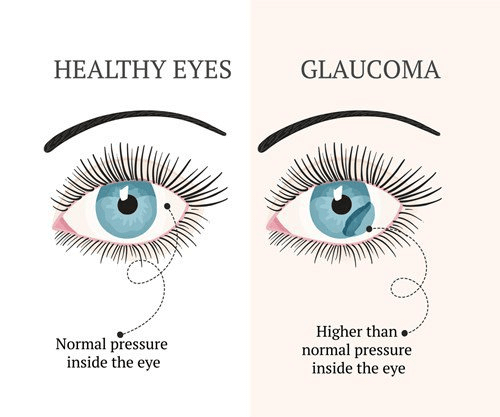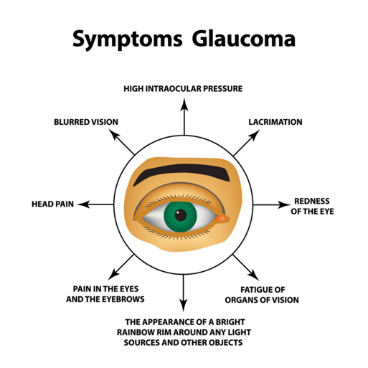Glaucoma DefinitionGlaucoma is a group of eye diseases that damage the optic nerve and can cause irreversible blindness. It is one of the leading causes of blindness worldwide, affecting approximately 80 million people. The condition is caused by high pressure inside the eye, which damages the optic nerve, responsible for transmitting visual information from the eye to the brain. 
Causes of GlaucomaOne of the primary causes of glaucoma is increased pressure inside the eye, also known as intraocular pressure. This occurs when the fluid inside the eye, called aqueous humor, is not able to drain properly, leading to a buildup of pressure. This pressure can damage the optic nerve over time, leading to vision loss. Age is another factor that can increase the risk of developing glaucoma. The condition is more common in individuals over the age of 40, and the risk increases with age. Other risk factors include a family history of glaucoma, African American or Hispanic ethnicity, and certain medical conditions such as diabetes, high blood pressure, and heart disease. Some medications can also increase the risk of developing glaucoma. Corticosteroids, such as those used to treat asthma and arthritis, can increase intraocular pressure and contribute to the development of glaucoma. Certain types of eye drops, such as those used to dilate the pupils during an eye exam, can also increase intraocular pressure temporarily. In addition, certain lifestyle factors can increase the risk of developing glaucoma. Studies have shown that individuals who smoke or have a high intake of caffeine are at an increased risk of developing the condition. Obesity and a sedentary lifestyle can also contribute to the development of glaucoma. SymptomsGlaucoma is a group of eye diseases that can cause irreversible blindness. The condition is caused by damage to the optic nerve, which is responsible for transmitting visual information from the eye to the brain. In the early stages of glaucoma, there are usually no noticeable symptoms. However, as the condition progresses, symptoms may begin to appear. 
One of the most common symptoms of glaucoma is a gradual loss of peripheral vision. This can be described as a narrowing of the visual field, where objects at the edges of the field of vision become more difficult to see. As the condition progresses, central vision may also be affected, leading to difficulty with tasks such as reading or driving. Another symptom of glaucoma is the presence of halos around lights, particularly at night. This is due to changes in the shape of the cornea, which can distort light and cause it to scatter. In addition, individuals with glaucoma may experience blurred or cloudy vision. In some cases, glaucoma can cause eye pain or discomfort. This can be due to increased pressure inside the eye, which can put pressure on the optic nerve and surrounding structures. In severe cases, nausea and vomiting may also occur. It is important to note that the symptoms of glaucoma can vary depending on the type of glaucoma and the severity of the condition. Some individuals may have no noticeable symptoms until the condition has progressed significantly. Regular eye exams, particularly for individuals with risk factors, can help detect glaucoma early and prevent vision loss. Types of glaucomaGlaucoma is a group of eye conditions that affect the optic nerve, which is responsible for transmitting visual information from the eye to the brain. The most common type of glaucoma is called open-angle glaucoma, which is characterized by a gradual increase in eye pressure that damages the optic nerve over time. However, there are several other types of glaucoma, each with its own distinct characteristics and risk factors.
Diagnosis of glaucomaThe diagnosis of glaucoma is typically done through a comprehensive eye exam, which may include the following tests and procedures:
Based on the results of these tests, a diagnosis of glaucoma may be made. In some cases, further testing or monitoring may be necessary to confirm the diagnosis or determine the severity of the disease. It's important to have regular eye exams, particularly as you age or if you have any risk factors for glaucoma. Early detection and treatment can help prevent vision loss and preserve your eye health. Prevention of glaucomaWhile there is no guaranteed way to prevent glaucoma, there are several steps you can take to reduce your risk of developing the disease or slowing its progression if you have already been diagnosed. Here are some strategies for preventing glaucoma:
Next TopicHazard Definition
|
 For Videos Join Our Youtube Channel: Join Now
For Videos Join Our Youtube Channel: Join Now
Feedback
- Send your Feedback to [email protected]
Help Others, Please Share










